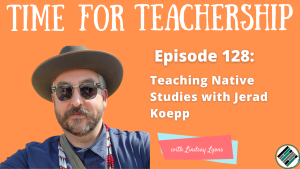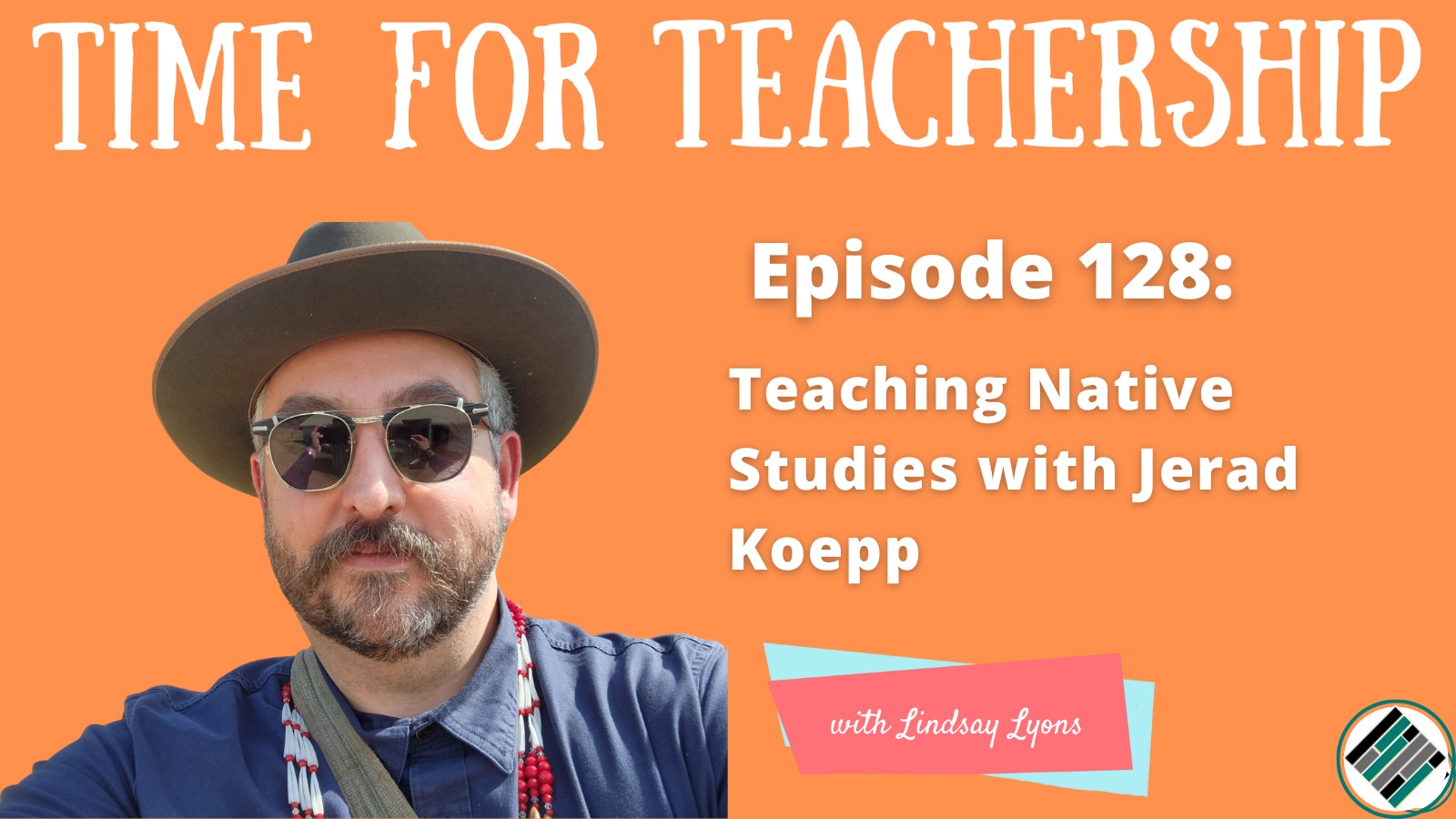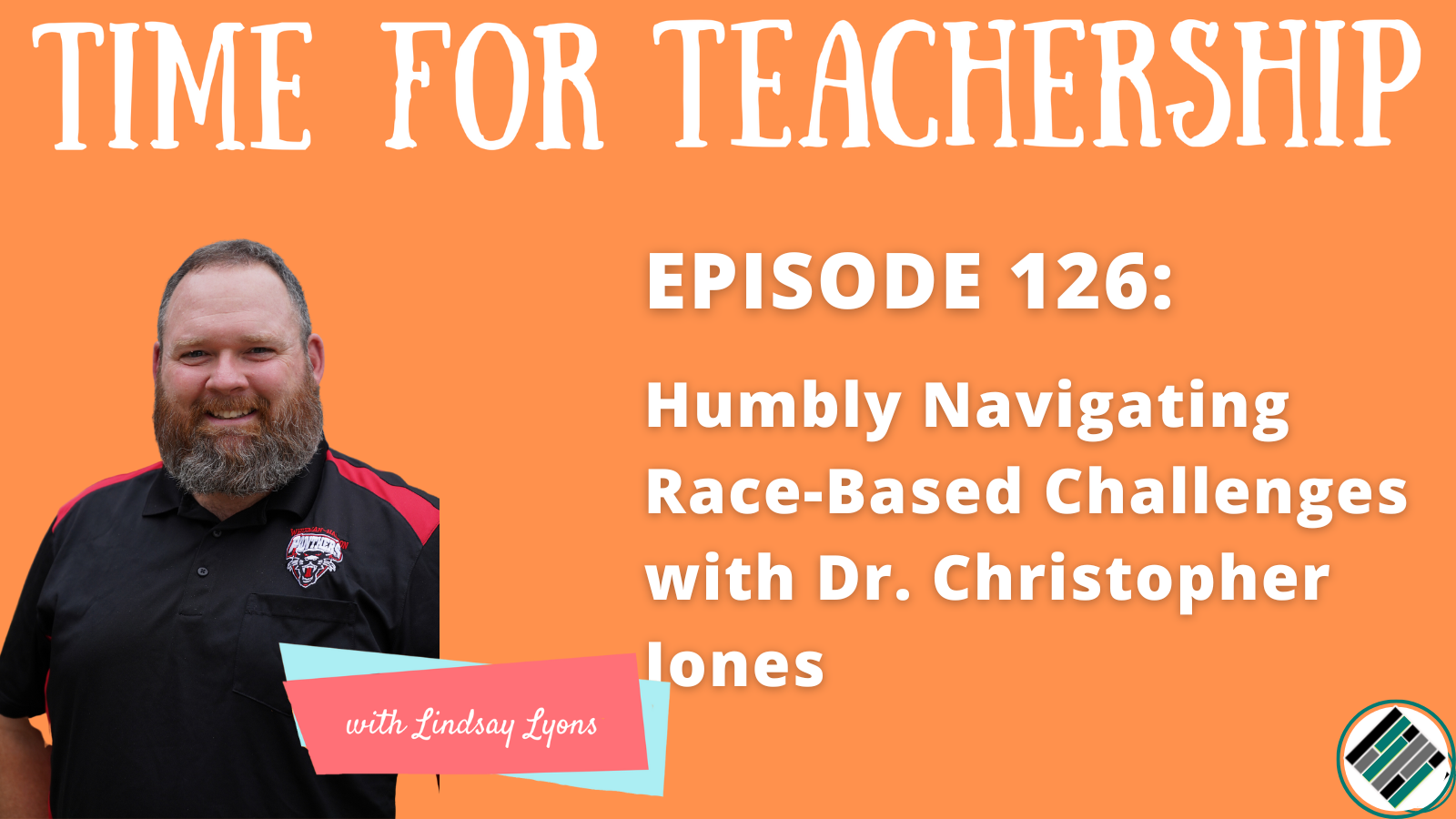
Jerad Koepp, Wukchumni, is the Native Student Program Specialist for North Thurston Public Schools, the 2022 Washington State teacher of the year, and the first Native American educator to earn the distinction in the state. He is a leader in Native education, policy, and government to government relationships. As an educator, trainer, presenter, consultant, and advocate, Jerad also created and supports his district’s dual-credited high school Native Studies program.
We met at a conference where there was lots of “unchecked settler privilege…non-Native educators presenting content and viewpoints of Native people while not working with any of them. It was one of those great opportunities to show the shortcomings of how even in progressive or educational spaces, Native erasure or omission is still compatible with the way modern public education works.”
The Big Dream
Make space for Native knowledge to thrive and contribute to educating all children.
Let “Native people do things the way we always have done and creat[e] spaces for that in order to learn together, collaborate together (rather than taking different theories of knowledge and ways of being and trying to fit them into settler structures).”
Mindset Shifts Required
Native people are racialized and politicized. Tlingit activist Elizabeth Peratrovich said, “Asking you for my civil rights, implies they are yours to give.”
The connection to land is the source of all knowledge. Nature is the original classroom.
Action Steps
When designing curriculum, the content and the curricula are actually towards the end of the list in terms of steps.
Step 1: Understand Settler History
Educators need to first understand the settler history of public education and its role in assimilating Native students, which is still in place today.
Step 2: Do Identity Work
Educators should ask: What is my settler identity? How have I benefited from, been complicit in, and continued to be part of settler society, of settler education? How is what I’m teaching contributing to the colonial unknowing of Native people throughout history?
Step 3: Give Space to Make Sure it’s Grounded it in Community
At the heart of it, is community-based education. Social justice education is grounded in community. Public education doesn’t give us the space to do that.
Step 4: Crosswalk Indigenous Academia with K-12
And develop courses. They started with an 11th grade course: U.S. History Through Native Perspectives. Then added Literatures through Native Perspectives (11th grade), and then added a Native Civics (12th grade).
Step 5: Guest Speakers
Ideas include: fellow students, people from the White House, tribal leaders, tribal council members, tribal historians, plant and medicine teachers, authors, Missing or Murdered Indigenous Persons advocates, native roboticists.
It’s more than guest speakers. It’s healing—reclaiming knowledge, contemporizing Native people, and diversifying Native representation. (If using Native singers or dancers, we have to explore the impact, the meaning of the songs, the regalia, the importance of language, story of people.)
Step 6: Make The Courses Count as College Credit
Students shouldn’t have to choose between AP or Native studies. The weight should be equal or greater than a typically offered course.
Partnering with universities protects the work and sustains it. It also helps better prepare future teachers. Jerad’s high school students guest taught undergraduate and graduate students!
Step 7: Honor the Genealogy of Knowledge
A key difference from traditional teaching/teacher training is the importance in Native studies of a genealogy of knowledge: Teachers are facilitators. “I learned how to weave this from these people of this tribe in this place.” This establishes a commitment to relationship—”I am responsible to these people for the way that I share this information.”
Be Mindful Of…
“We can’t just absorb information because Western society has extracted from Native people for five centuries with devastation. And so, we need to be able to acknowledge that, heal it, and then make sure we don’t do it again…a big part of the work we do needs to be generative to contribute to a brighter indigenous future, a brighter future for the knowledges that we have the privilege to share in our class.”
Steps to Get Started
Go check out public events. Support Native-owned businesses and artists. Learn directly from Native Education groups, including the National Indian Education Association.
Be intentional about who you are talking about and ask: “Who’s not there? and What does it mean?” Go to the index of your social justice books. Are Native people there? Consider language: “Black and Brown” does not include lighter shades of Native people. This only addresses the racialization side and not the political side.
Books Jerad Recommends:
- Red Skin, White Masks
- Red Pedagogy
- As We Have Always Done
- The Afro-Indigenous History of the United States
- The Third Space of Sovereignty
Stay Connected
You can find Jerad on his website: http://www.jeradkoepp.com.
To help you start to identify places where you might “jam a screwdriver into the cog,” I’m sharing my Diagnosing Adaptive Challenges workbook with you for free. And, if you’re looking for more details on the ideas in this blog post, listen to episode 126 of the Time for Teachership podcast. If you’re unable to listen or you prefer to read the full episode, you can find the transcript here.
Quotes:
- “Visibility comes with responsibility. We want to have more representation, but if it’s done without the proper positionality, the proper self-work, the proper relationships, you’re perpetuating the same systems while convincing yourself you’re doing something good.”
- “I just asked the obvious question…’Is that appropriate [to develop curriculum without Native education consultants]?’ And it got super quiet in the room as if people forget that we’re still here even as they’re talking about our presence.”
- “A lot of social justice actually is absorbed by settler society because it doesn’t ultimately threaten their continued power.”
- “What’s also really inspiring when we get into these sorts of conversations is that it helps us—hopefully—reflect and reconnect with the idea that every single person in the world is indigenous to somewhere…Our dual-credit Native studies program…we consistently see students with cultures representing everywhere in the world find meaningful connections to indigenous story and indigenous knowledge…it’s about their connection to place and family.”
- “You need to be learning in the places and in the communities that have always been the home of that knowledge.”
- “Boarding schools forced not just Christianity, but gender roles…they assigned you those identities, and so you start to see the fundamentals of our identity being whittled away. And then you see things like the Homestead Act and the General Allotment Act (the Dawes Act)…women who were often the property owners, that went to the men. Through legislation, that forced a western, hetero-patriarchical, nuclear family structure which was also counter to the way we had traditionally done things…the sovereignty and legislation all plays in, so we can’t avoid this sort of aspect of it…it brings in so much context to everyone else’s conversation in their paths to liberation. Dubois and Charles Eastman were close and wrote papers together. The Black and Indigenous communities were close ”
- “Where are those boundaries solid, where are the permeable and then where are they fragile? So, where can we make our moves? If you want to be a classroom insurgent…where can I work within that system to…push those boundaries out?…Where can we jam a screwdriver into the cog to either break it or slow it down a little bit?”
- “We always have to envision a joyful future.”


















